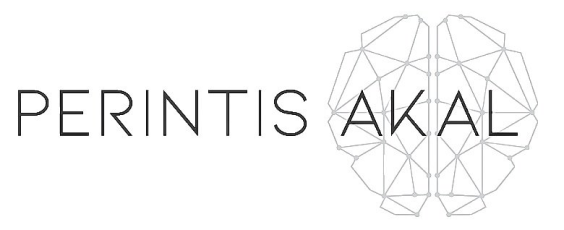There’s still no sign of flying cars by 2020 but technology has given us a way to make public transport safer, greener, more convenient and more efficient. No longer do we need to go all the way down to a station to buy tickets, obtain travel schedules or be alerted to possible route disruptions; today, all of this can be done quickly and conveniently on a mobile phone.
Who’s winning and how?
One country has brought the convenience of mobile connectivity to public transport with great success. Cheap, frequent, clean and efficient, Vienna has been lauded for having one of the best public transport systems in the world. In 2017, it introduced its WienMobil app that combines both journey planning as well as ticketing in one. Taking the public transport app to the next level, WienMobil allows users to completely plan, book and pay for their journeys on all the different modes of transport in the city. This includes both public transport as well as options like bike sharing, taxis and car-sharing. The app also lets commuters to filter route planning by distance, time and cost as well as by environmental impact, allowing the Viennese public to not only find the route that costs the least number of euros, but also the least amount of CO2.[1]
The situation in Malaysia
Unlike Vienna, there is no similar all-in-one app for public transport in Malaysia. Transport providers like MyRapidKL, which oversees the major railways and bus routes in the Greater Klang Valley, generally communicate through social media – for instance, updating commuters about a delay in the Kelana Jaya LRT line through Twitter.[2]
Previously, there was a mobile app called MeterOn launched about three years ago that allowed passengers to verify and track their journey while taking a taxi or bus. However, general awareness of the app was low as many Malaysians were not aware of this app or its function as a channel allowing interactive and efficient customer feedback, rating and complaints. As of 2019, the app itself does not seem to be available on the Google App Store anymore.
A case for change
 MeterOn was a good start but did not allow for commuters to view information about public transport services in real-time. Malaysians have often remarked that public transport in Malaysia, especially the bus service, tends to be inconvenient and tardy. Service information, such as the estimated time of arrival (ETA) of buses, is not publicly displayed so commuters often have no way of knowing how long they would need to wait for a bus or train to arrive without having to go to the platform itself or post a question on social media. This makes planning a trip on public transport (much less one that uses more than one method of public transport) inconvenient.
MeterOn was a good start but did not allow for commuters to view information about public transport services in real-time. Malaysians have often remarked that public transport in Malaysia, especially the bus service, tends to be inconvenient and tardy. Service information, such as the estimated time of arrival (ETA) of buses, is not publicly displayed so commuters often have no way of knowing how long they would need to wait for a bus or train to arrive without having to go to the platform itself or post a question on social media. This makes planning a trip on public transport (much less one that uses more than one method of public transport) inconvenient.
With easy access to technology like Wi-Fi and GPS systems, public transportation services have been able to upgrade their services to keep up with consumer demands. For instance, mobile connectivity enables real-time, two-way information flow between commuters and transport providers, allowing passengers to get updates or even give feedback on their travel experience on the go. Smart algorithms can process this information rapidly, and tweak schedules and routes of public transport services to provide better and more targeted services. Even artificial intelligence (AI) has a part to play in improving transport services; using AI reduces the need for human intervention, allowing services to be provided quickly and more efficiently.
Recently, more countries have moved toward combining all modes of public transport under one system or app much like Vienna’s WienMobil. Mobility as a service (MaaS) is a consumer-centric model of transportation for people. Instead of using personally owned cars or other means of transport, MaaS seeks to make taking public transport easier for commuters by allowing people to plan, book and track their journeys all on a mobile phone. A growing body of evidence has suggested that providing more infrastructure won’t solve traffic problems – building more is costly, time-consuming and would likely only provide temporary relief.[3] Instead, MaaS builds on what is already there and makes travelling more convenient.
As a consumer-centric model of transportation, MaaS works by providing commuters with an on-demand, real-time platform that can include any combination of transport methods. It allows for easy route planning by letting users plan end-to-end journeys from the moment they leave their front door right up to when they reach their final destination. It allows for simplified payments by allowing users to pay for transport via e-wallets or credit cards before or after their journey. Some MaaS even offer subscriptions. Lastly, MaaS offers a personal touch; as a fully personalised service, it builds relationships between users and transport providers by using big-data, two-way communication and constant user feedback to customise and refine the offered services.
Where is Malaysia at currently?
Malaysia has taken steps in the right direction. MyRapid provides journey planning for all modes of transport under their purview on their website. They’ve announced plans for a journey planner app to be rolled out within the next year. KTM Bhd, which manages the KTM rail network for intercity and commuter trains, recently launched a journey planner app called MyRailtime in May that allows passengers to check for real-time information on train ETAs, departures and delays.[4]
However, all these apps are strictly for their individual services and do not allow for services like booking and paying for tickets which still must be done at the stations themselves or through e-payment options like Touch n Go. There is no one common app that allows commuters to see the schedules or routes of all transportation services in the city.
In addition, the data collected through GPS devices installed on buses and other forms of public transport vehicles tends to be only made available through the individual transport operators when necessary as in the case of a service disruption when it should be communicated in real-time to the public. Malaysia has started using GPS data to track bus fleets as early as 2012; however, providers seem to only do limited monitoring of this data when this data could be used to ensure that all public transport vehicles maintain a certain set of safety and service standards. For example, GPS data could be used to publish real-time estimated time of arrival (ETA) and departure (ETD) on platforms such as a journey planner app or to 3rd party transport service providers like Grab for those who need additional transport to get to where they need to be.
The platform for hosting this data is key. Rather than posting updates on Twitter or hosting the journey planner on a website that may not be optimised for commuters on the go, a mobile app is a perfect platform for this information as it reduces the cognitive effort to sift through route schedules or lists of stations. Studies have shown that mobile apps give users more control over a task which enhances their satisfaction and comfort with the decision-making process.[5] In transport, this means that apps help the user’s sense of being on time and knowledge of when they will arrive. For example, people waiting in line at the bus station who don’t have access to real-time arrival information feel that their waiting time is longer as opposed to those who can track exactly when the bus would arrive.
Having access to real-time data can also be used to help transport authorities refine the routes and modes of public transport. When introducing a new policy or solution, the chances are that implementation won’t go perfectly right out of the gate as at least some of the initiatives will need to be tweaked as problems arise. By creating a platform where users can get real-time updates and report back on problems would help authorities to get a clearer picture of what is happening on the ground, what works and what doesn’t, and to make the changes necessary for a smooth public transport experience that fits public demand.
Opportunities abound. But it’ll take a village to move the needle.
 MaaS cuts across different modes of transportation, which are owned and operated by multiple providers, to provide an easy, one-stop-shop to get from point A to point B. It has clear benefits for the public who would be able to choose where they want to go, when they want to go and how to get there. The challenge here will be getting buy-in from transport providers. For trips that include more than one mode of transport, each mode should be adequately compensated for its portion of the trip – this means taking into consideration the different ticketing systems (including fare zones, discounted fares and concessions) of the buses, trains, and e-hailing rides operating within the area.
MaaS cuts across different modes of transportation, which are owned and operated by multiple providers, to provide an easy, one-stop-shop to get from point A to point B. It has clear benefits for the public who would be able to choose where they want to go, when they want to go and how to get there. The challenge here will be getting buy-in from transport providers. For trips that include more than one mode of transport, each mode should be adequately compensated for its portion of the trip – this means taking into consideration the different ticketing systems (including fare zones, discounted fares and concessions) of the buses, trains, and e-hailing rides operating within the area.
This is where public-private partnerships come in. This is an opportunity for governments to work with private transportation providers to create MaaS platforms with the true north of increasing the use, productivity and efficiency of transportation within the country. We’re seeing some of this happen already, here in Malaysia as well as in cities around the world, with transport authorities partnering with technology service companies to build mobile apps, or with e-hailing companies to provide short trips to and from public-transit stations. Public private partnerships have great potential for innovation. Working together optimises the use of available knowledge and resources especially for a project like MaaS where there is a need to pool together all relevant data and expertise. Rather than simply building more stations to encourage more people to use public transport, transport authorities can work with private corporations to transform the way people get around in a city. The key is to develop strategic alignment across all stakeholders and build common ground so that everyone is motivated and held accountable to work towards the true north – a safe, convenient, and efficient public transport system for one and all.
- Ziptopia (2017)
- The Star (2019)
- The Conversation (2019)
- The Star (2019)
- US Department of Transportation (2017)






